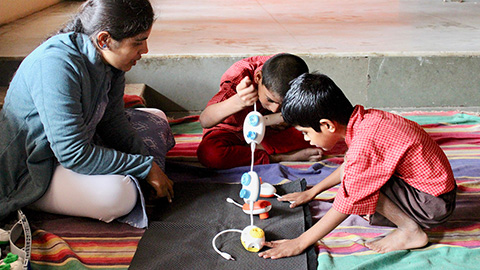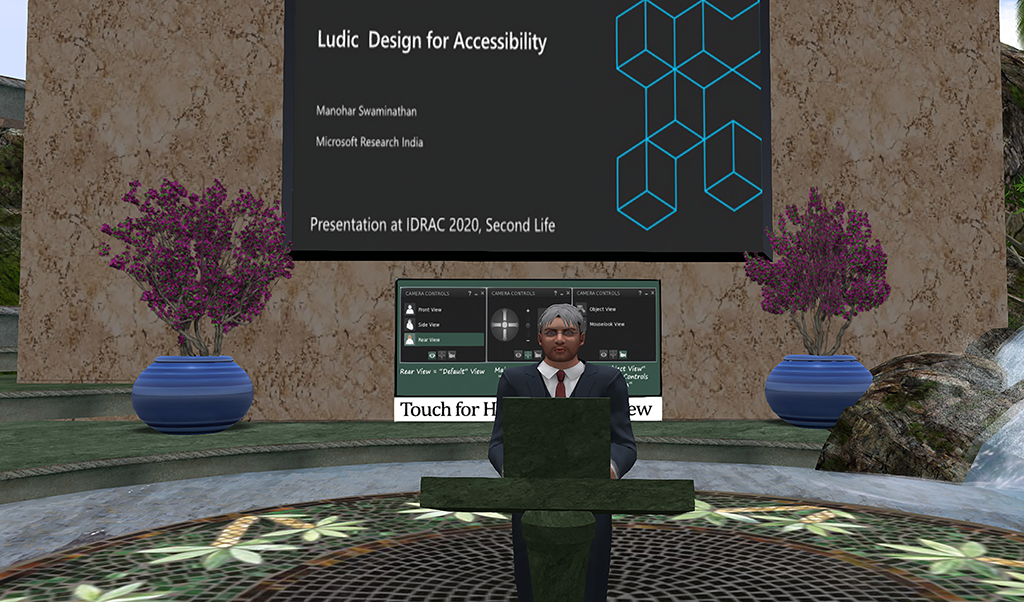Technology solutions for accessibility have long been created using a narrow utilitarian lens, especially in the Global South due to multi-dimensional challenges and resource constraints—an emphasis on purely functional outcomes supported by sterile cost-benefit analysis that ignores the fact that people with disability are people first with their own aspirations for leisure and enjoyment in addition to skills and employment. We propose an alternate design methodology called the Ludic Design for Accessibility (LDA) that puts play and playfulness at the center of all assistive technology design and use. We then describe a seven-step framework for designers to apply this methodology to create impactful solutions. Though LDA is universally applicable, we highlight the factors that make it especially relevant in the context of accessibility in the Global South.
 Several projects are underway that apply the methodology of Ludic Design:
Several projects are underway that apply the methodology of Ludic Design:
- Computational Thinking as Play, for children in schools for the blind in India
- Project Torino (now CodeJumper)
- Enhancing numeracy with tangible toys and play
- Digital skilling of teachers in schools for the blind
- Project SEEDS
- Stroll: combining exercise and exploration to enhance both experiences for people with vision impairments
- Ludic Design for DHH community to enhance their English skills and the hearing community to enhance ISL skills
- Ludic Design for making these accessible online to both teachers and children who are blind and who have limited exposure and access to online tools

